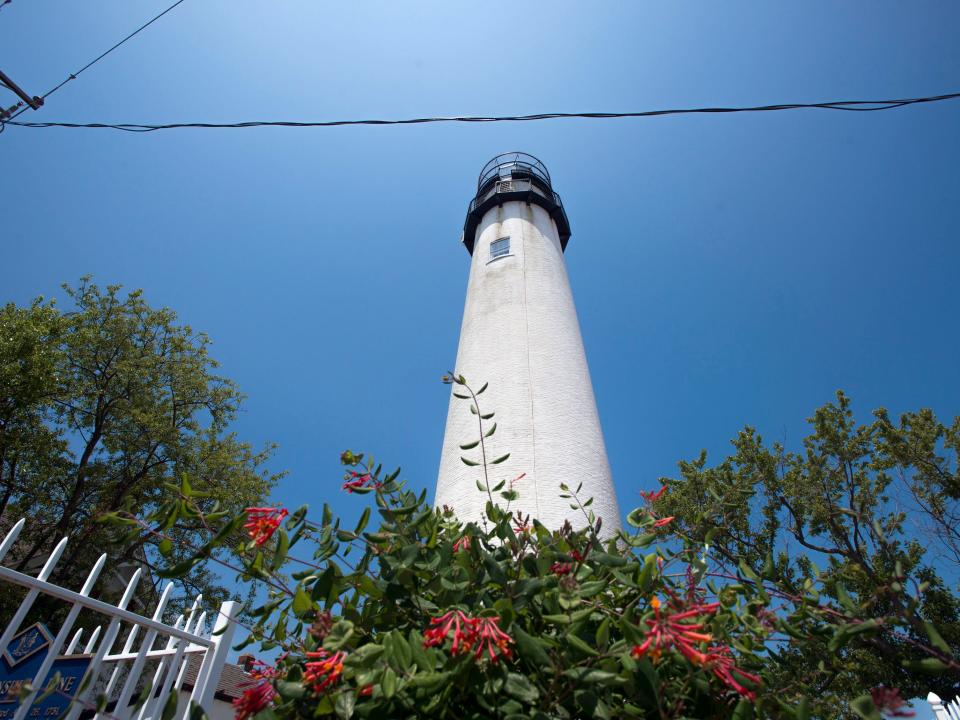A saga of fire and ice, and the vital surveying of Maryland-Delaware border
“This day also very tempestuous,” John Watson wrote in his journal on Dec. 21, 1750, shortly after his arrival on the mainland opposite Fenwick Island.
Watson was an experienced surveyor who had done extensive work in Pennsylvania. He and William Parsons were chosen by the Penn family, which owned Delaware at that time, to be part of the survey team, along with a contingent of surveyors appointed by Lord Baltimore, that was to mark the border between Delaware and Maryland.
Key meeting in border decision came on Fenwick Island
The two groups of surveyors met on Fenwick Island on Dec. 20, 1750. The weather was so cold and stormy that the men quickly adjourned to the mainland, where Watson and the others found lodging at the home of Dr. Pikes.

To eliminate traveling back and forth to Fenwick Island, the surveyors built a small cabin on the beach, where the initial and most difficult observations were to be made.
On Jan. 4, the surveyors were about turn in for the night, when a spark from the fireplace ignited the roof of the cabin. As the fire quickly spread throughout the small building, the surveyors grabbed as much of their clothing and blankets that they could carry and dashed outside. Watson, having survived the fire unscathed, soon would discover how icy the winter weather could be in southern Delaware.
As the surveyors took their measurements, Watson expressed mixed emotions about the southern Delaware coastal region, “The raising of cattle is a very main article with these people, and their lives [are] wholly at the mercy of the Winds! ... the marshes affording excellent pasture for creatures almost all the year when the ground is free from snow. Yet it seems a very disagreeable hazardous place of abode.”
DELAWARE NEWS: Why did Delaware home sales and prices dip in October? What it means for buyers, sellers
Frigid weather actually a boon for border surveying
After establishing a starting point at a cedar post a short distance from the surf, the surveyors began to work westward as the temperatures continued to drop. Fortunately, the cold weather had an upside for the surveyors.
According to Watson, “the hard weather had frozen the marshes … over so hard that it bore us to walk over on the ice.” Being able to walk on the frozen marshes enabled the surveyors to work quickly, Watson noted, “[It was] the first [day] in which we went on any ways successfully with our business. With our success we were much delighted.”
Finally, the team was stymied when a warm spell began to melt the ice in the Great Cypress Swamp, west of what is now Selbyville. Watson complained, “The ice rotten, the water deep, thick with hollys, maples, sweet Gums and low brush hung full of green briers which renders the crossing it not only impracticable.”
On Jan. 14, 1751, the Maryland surveyors, citing the short winter days, the fickle weather, and the melting ice, decided to stop work. Watson and the other Pennsylvania representatives agreed, and the surveying was abandoned until conditions improved.
Watson and other surveyors eventually returned to complete the line across the southern border of Sussex County. Legal wrangling then suspended the work for several years.
The survey of the border was resumed by Charles Mason and Jeremiah Dixon; and their names became synonymous with the border between the holdings of Penn and Maryland. Near the Fenwick Island Lighthouse, a weather-beaten stone stands as a testament to the work of John Watson and the original surveyors who battled fire and ice in southern Delaware.

Principal sources
John W. Jordan, “Penn versus Baltimore,” The Pennsylvania Magazine of History and Biography, Vol. 39, No. 1, 1915, pp. 2
John W. Jordan, “Penn Versus Baltimore, Journal of John Watson, Assistant Surveyor to the Commissioners of the Province Of Pennsylvania, December 13-March 18, 1750/51”, The Pennsylvania Magazine of History and Biography, Vol. XXXIX, 1915, No. 1, pp. 2-27.
Roger E. Nathan, East of the Mason-Dixon Line, p. 22.
Mary Pat Kyle, Fenwick Island Delaware A Brief History, Charleston: The History Press, 2008, pp. 27-30.
This article originally appeared on Salisbury Daily Times: Initial Maryland-Delaware border survey was stymied by fire and ice

